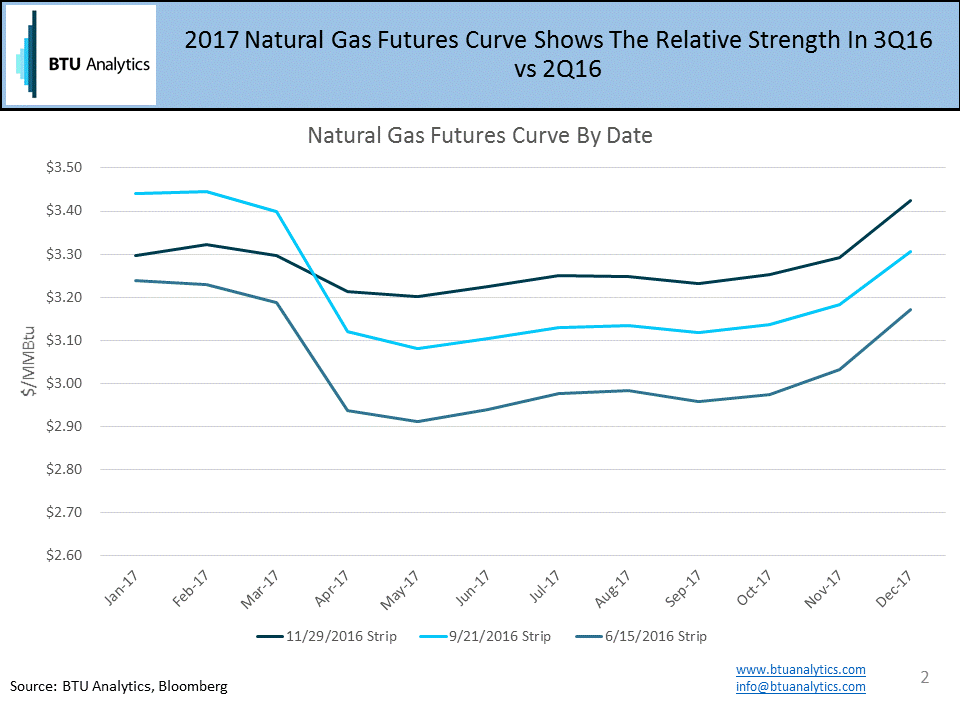For the past few months, there has been a lot of uncertainty about how this winter is going to play out for natural gas producers. With storage at 5 year maximum levels, production slowing, and mild weather to start the winter, it’s been a rocky road for natural gas producers. Larger independent producers generally hedge a portion of their production volumes to help lock in cash flow and minimize risk and exposure to price volatility. The release of third quarter filings means that operators have released new hedging numbers, which gives us insight into changes in their thinking from the second to third quarter.

A review of hedging updates shows that 2017 gas hedges were up across the board in the third quarter. Based on the new numbers of roughly 25 select independent producers, gas hedges for 2017 are up by nearly 3.5 Bcf/d compared to where they were in the second quarter. Some notable additions were nearly 1 Bcf/d added by Chesapeake (NYSE: CHK) and 850 MMcf/d by Southwestern Energy (NYSE: SWN). Range Resources (NYSE:RRC) and Rice Energy (NYSE: RICE) added hedges through their acquisitions of Memorial Resources and Vantage Energy, respectively. Among the chosen producers nearly 50% of 2017 gas production is hedged, up from 35% of 2017 production in the second quarter of this year.

The increase in the number of hedges can be attributed to a few things, the first of which is that we are now closer to 2017. Producers generally layer on hedges over time, so as the start of the new year gets closer, it isn’t unusual for additional hedges to be added. The second reason is a little more interesting. Back in September, the forward curve was relatively strong, with early 2017 sitting around $3.50/MMBtu. Given that this was about $0.25/MMBtu higher than the strip in 2Q, and much higher than prices producers have seen in recent years, producers were incentivized to layer additional hedges. Even now, the 2017 post-winter strip shows strength compared to 3Q, which means we could continue to see additional 2017 hedges added on in the final month of this year. Combine that relative strength with the uncertainty in winter weather, as well as the high levels of low-cost inventory in the ground, adding a significant amount of hedging can be seen as a natural reaction.
Of course, layering on additional hedges comes with a certain degree of risk to spot pricing. More hedges means more operational certainty for producers and more production that is likely to come to market, reducing the supply response to spot price volatility. If warm weather returns, and activity from gas plays comes back strong, the locked in production volumes could spell trouble for gas prices.









